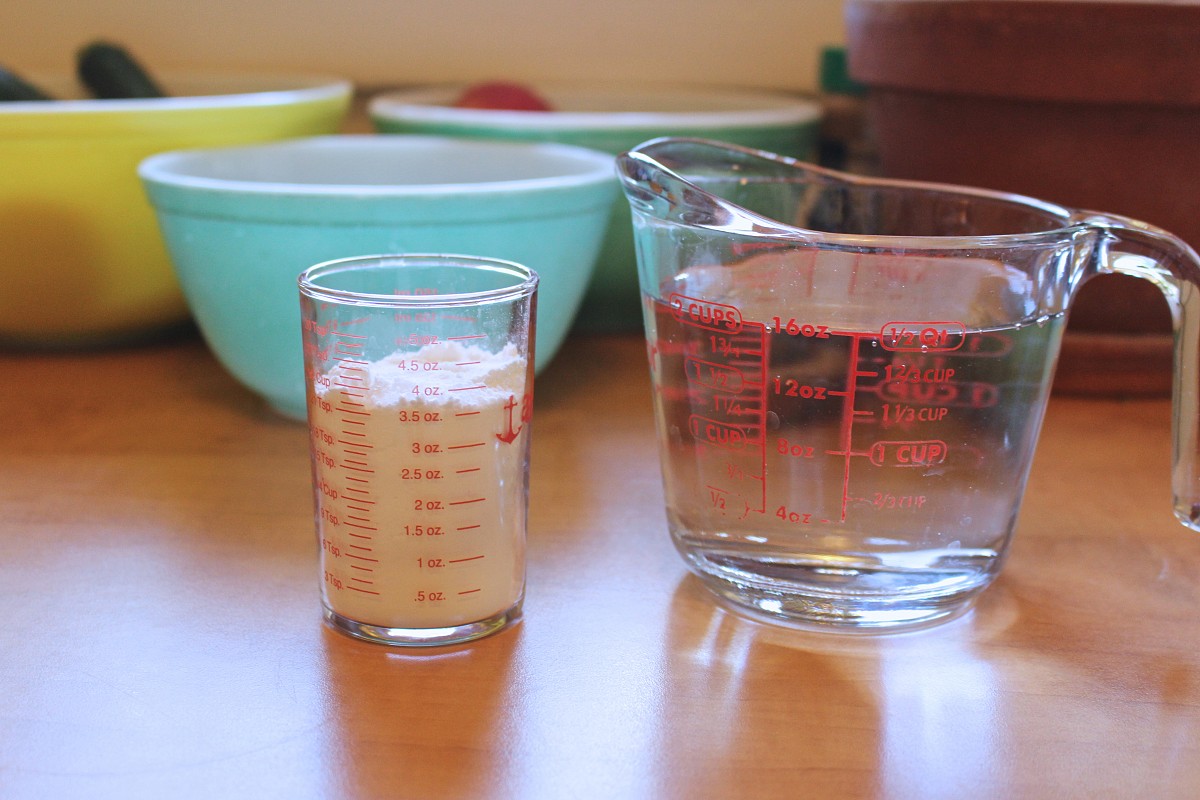We Tested It: Eco-Friendly Cleaning: Cream Of Tartar
 I’d been hearing this buzz in my hippie circles about making all kinds of awesome eco-friendly home cleaning products using cream of tartar. Cream of tartar? Before I could commit to cleaning with it, I wanted to know: "What is that weird white powder that hides in the back of every spice rack?" Well...
I’d been hearing this buzz in my hippie circles about making all kinds of awesome eco-friendly home cleaning products using cream of tartar. Cream of tartar? Before I could commit to cleaning with it, I wanted to know: "What is that weird white powder that hides in the back of every spice rack?" Well...
Cream of tartar is a potassium-based salt derived from tartaric acid. It’s actually a byproduct of winemaking, because during fermentation the potassium bitartrate -- that’s the fancy name for cream of tartar -- crystallizes along the inside of wine casks. That’s why they call the crystals “wine diamonds.” Which is a pretty cute spin on a strange salty deposit, no?
These crystals that form in wine casks are the source of most commercial cream of tartar, which is collected and then purified to create the white powder we all know and love for one thing and one thing only: snickerdoodle cookies!
But apparently, cream of tartar isn’t just for cooking. It can be used in a variety of ways around the house, doing everything from polishing copper, brass, and aluminum to removing stains in the laundry. I wanted to put cream of tartar to the test as an all-natural, all-purpose cleaner, so I pitted it against three mighty opponents: my bathtub, my stainless steel stovetop, and my kitchen counters.
There are lots of different recipes that call for cream of tartar to be mixed with a number of different ingredients. But for my purposes here, I made a simple basic “soft scrub” which I used in all three applications.
Cream of Tartar Soft Scrub
2 cups distilled white vinegar
1/2 cup cream of tartar
In a glass mixing bowl or small plastic bucket (no metal), combine the ingredients and stir. The cream of tartar will not dissolve completely. Use the soft scrub by dipping a sponge or rag into the solution. Give it a little swirl every so often, to keep the ingredients evenly distributed.
Here’s how the Cream of Tartar Soft Scrub stacked up against its adversaries:
The Tub
I’m really impressed with how well it worked on the sticky scum that clings to the cheap acrylic tub/shower in the little place I rent. The abrasive action of the powder was like a powerhouse cutting through scum. I usually use plain vinegar to clean my tub, and it always requires a lot of elbow grease. This made the job a whole lot easier, and I’m never going back!
The Stainless Steel Stovetop
I noticed that the solution really seemed to shine up my faucet when I cleaned the bathtub, so I had high hopes for how it might perform on other, larger metal appliances. It certainly did the job removing the splatters from my stove, but I wouldn’t say it was any better than my standard baking soda-based cleaner. Of course to be fair, it wasn’t any worse, either.
The Kitchen Countertops
My place has white laminate countertops that have been well worn by the many renters that came before me. It’s got many chips and nicks and it’s quick to show the stains from my black tea, red wine, and green juice spills. So needless to say, it’s hard to keep clean.
But I’m happy to report that right now, after scouring with the cream of tartar solution, my countertops are looking whiter and brighter than they ever have before. Literally ever! Consider me converted, and one step further away from having to call in a San Diego remodeling team to update my kitchen.
So all in all, I have to give cream of tartar a big fat A+ in the eco-friendly, DIY home cleaning department. Cheap, widely available, easy to use, effective, and safe enough to eat -- that's a 5-star rating as far as I’m concerned!
Sayward Rebhal writes for Networx.com.
Updated May 1, 2018.
Looking for a Pro? Call us (866) 441-6648

Cleaning Average Costs
Cleaning Services Experiences

The Right Landscaper Can Change A Yard From Terrible To Terrific

“Stealth” Tree Trimming Was An Incredibly Clean Job



